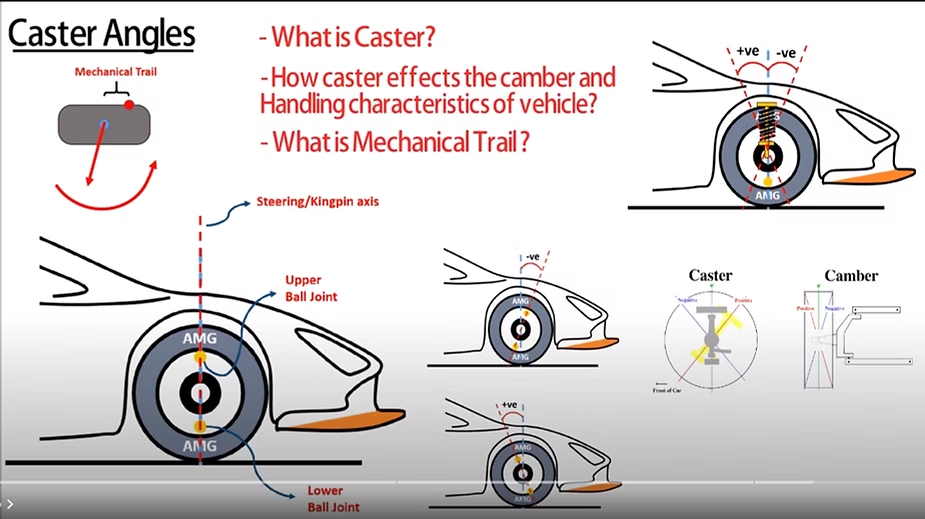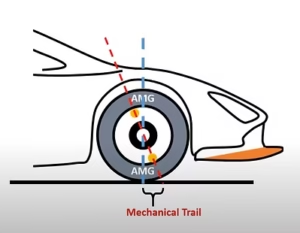
What is Caster?

The caster angle signifies the inclination of an imaginary line that connects the upper and lower steering pivot points, as viewed from the side. These pivot points can be comprised of the upper and lower ball joints for double wishbone geometry or the lower ball joint and strut for MacPherson geometry. To illustrate, imagine a front wheel, with a vertical blue line passing through its center. The upper and lower ball joints on the knuckle or upright create the steering axis or the kingpin axis. Currently, the steering axis is represented by the red line, which is parallel to the blue vertical line. This configuration is referred to as zero caster.
If we rotate the ball joint counterclockwise, the steering axis will incline towards the rear of the car, resulting in a positive caster. Conversely, rotating the ball joint clockwise will cause the steering axis to lean towards the front of the car, leading to negative caster. The same principles apply to MacPherson geometry, where positive caster involves a steering axis tilting towards the rear of the car and negative caster means the axis is tilted towards the front.
How does Caster affect the camber and handling characteristics of a vehicle?

Caster angle plays a role in the camber of the wheels during steering. When a car is configured with positive caster, the outside wheel experiences negative camber while cornering, while the inside wheel gains positive camber. This causes the vehicle to lean into the turn, maximizing the contact patch with the ground. In terms of tire alignment, a positive caster generates an advantageous camber and leaning effect, enhancing traction. On the other hand, negative caster introduces an unstable effect and is generally not preferred.
Positive caster does increase steering effort, but this can be mitigated by employing power steering. Another noteworthy benefit of a positive caster is its contribution to the self-centering behavior of the steering wheel. This phenomenon is due to the mechanical trail, also referred to as the caster trail.
What is Mechanical trail?

Mechanical trail signifies the distance between the steering axis and the center vertical line of the tire at the contact patch. In the top view of the tire, the blue dot represents the center line, while the red dot represents the steering axis. The separation between these two dots represents the mechanical trail.
When the tire is steered, a subtle force is exerted in a particular direction. Thanks to the mechanical trail, a torque is produced around the red dot, which helps the tire straighten itself after turning. This torque is responsible for the self-aligning effect, making the steering wheel return to its original position on disengagement. Thus, the self-aligning torque is facilitated by the mechanical trail, ensuring the steering wheel’s self-centering capability.